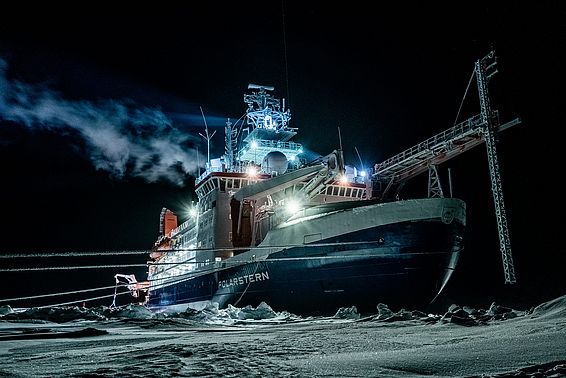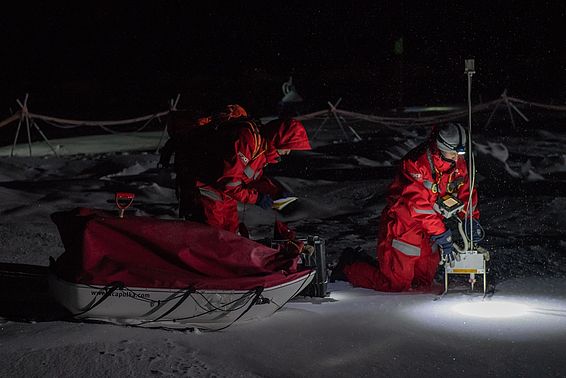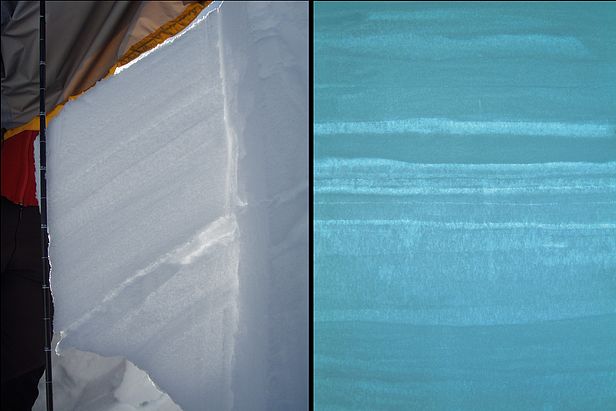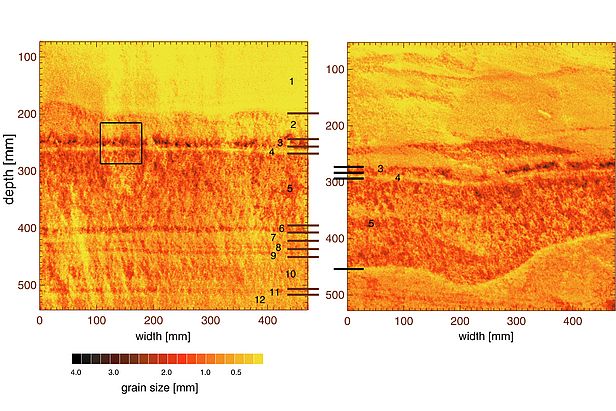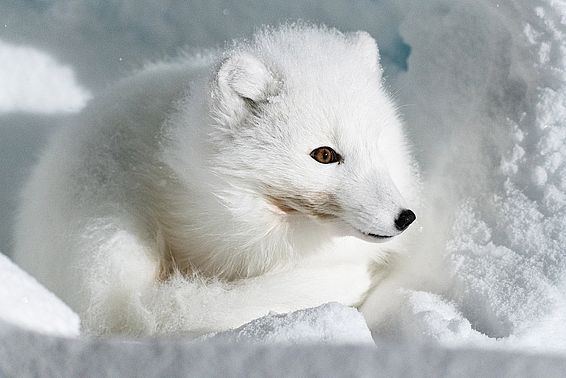19.02.2020 | Logbook
[Translate to Englisch:] Autor
On an expedition like the current MOSAiC expedition, somebody knows your exact whereabouts at all times – for your own safety. Read Matthias Jaggi's blog to find out how that feels. And how you keep a hungry Arctic fox from chewing on important cables.
Greetings from Alcatraz! Escape here is impossible, even if you feel like a little alone time occasionally. It may sound strange, since you'd be hard pressed to find anywhere more remote, but you are with at least one other person at all times, and one of you will be carrying a semi-loaded gun on your back. I don't want to give the wrong impression about my state of mind: I'm absolutely fine and the time is flying by. Nevertheless, I'm looking forward to the freedom I'll have when I get back home. Here, someone always knows where you are, what you're doing and how long it should take you.
When you leave the ship, you have to check out with the gatekeeper on the gangway. If you forget to check back in, someone will be out searching for you by 11.30 a.m. or 5.30 p.m. and your name will be called out on the ship's loudspeaker. You also register online and if you fail to confirm 'safe return' before the end of the field trip, an alarm sounds on every 'public' PC on the ship, so everyone on board gets to know about it. This surveillance is always justified, of course, because it's entirely for our own safety.
Sweating in a polar suit
By now, we're a well-drilled team out on the ice. Preparations for snow profiling begin the evening before when we pack the sledge. We use packing lists to make sure we don't forget anything. On the morning itself, there is a 10 minute meeting at 8.30 a.m. when we can make any last-minute changes to the programme. Then it's time to go down to E deck, fetch the radio and heaving line, get togged up with multiple layers of clothing, grab the right sledge and get outside ASAP before we collapse from heat exhaustion. The group's designated 'bear guard' also has to pick up the shotgun and flares used to scare off any polar bears that might show up. Then it's back to the gangway, which is lowered at 9 a.m. The morning field-work slot ends at 11.30 a.m., which is rather tight, so everything has to be done quite fast. Kit is fastened to the snowmobile and driven to one of the designated snow sampling areas.
These areas are not chosen at random, of course, but based on a prior attempt to determine the stratigraphic patterns that are present. For example, that could be snowpack on first-year ice, snowpack on multi-year ice or snowpack on a crevasse that has opened up in the ice and then frozen over again. We visit these various places in turn and record the physical and chemical condition of the snowpack by taking a snow profile.
Studying the snow
First we take pictures of the snow surface from various angles. These photos are later photogrammetrically analysed to give us a surface roughness value. Next, measurements are taken with the SnowMicroPen, an instrument that measures the penetration resistance of snow. Then it's time to get digging. Well, that's the theory anyway!! We don't have to ram the shovel far into the snow – just half a blade's depth – before we start to encounter resistance from the ground, or rather the ice. The snowpack is still quite thin at the moment so we have to make do with profile depths of 8 to 30 cm.
We illuminate the snow profile with near-infrared light and then take a photo. From this we can derive information about the microstructure of the snow. This is followed by another density profile. Last but not least, we use hollow drills to take snow samples, which we transport back to the ship with the utmost care and then examine with the CT scanner. We also collect samples in plastic tubes for chemical analyses that test for, among other things, soot, microplastics, salinity, iodine, the oxygen isotope O18 and nitrate.
Belly-crawling over the ice
Our work invariably sees us lying on our stomachs for an hour in front of the snow profile, belly-crawling to the left and right like seals, rubbing the dripping snot from our noses with a glove, trying to make some kind of notes in the flapping pages of the field book, swearing, subjecting the instruments to mild physical abuse when they don't work properly right away, and so on and so forth. It might all look a little ridiculous viewed from the outside but the insights gained into the physical processes taking place in these Arctic snowpacks should help to improve climate models in the future. Logically, all process flows have to factor in not just the snow but also the ice, the ocean below and the atmosphere above. And that's what the MOSAiC expedition is all about – understanding the impact of the Arctic on the global ecosystem. Quite an ambitious objective…
Hungry Arctic fox
On a different note: the Arctic fox has paid us another visit and it turns out he's rather partial to cables. We found a number of data cables completely bitten through and a few of the power cables had been chewed in such a way as to rule out an ordinary short-circuit. Our suspicions were confirmed when we checked out some pictures taken with the telephoto lenses as he lay down to rest out of the wind next to the ship: we could make out blue and orange plastic shavings in the fur on his head! After replacing the cables, we rubbed them with diesel-soaked rags (which no doubt tastes like coffee with Assugrin sweetener), and this seems to have served as a deterrent.
And so it goes on:
Twilight, chicory and the final spurt
The second leg of the MOSAiC expedition is drawing to a close. In the next blog post, you'll find out what important measurements the researchers have already taken and how the light is slowly returning.
Follow the MOSAiC expedition: https://follow.mosaic-expedition.org/
